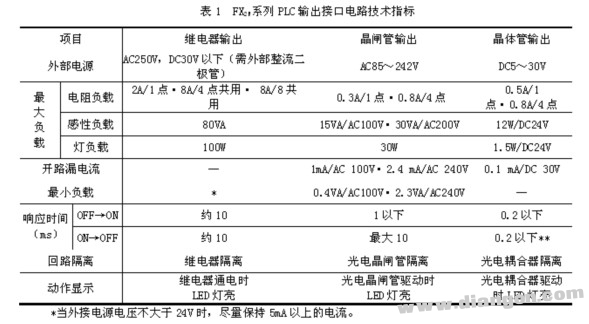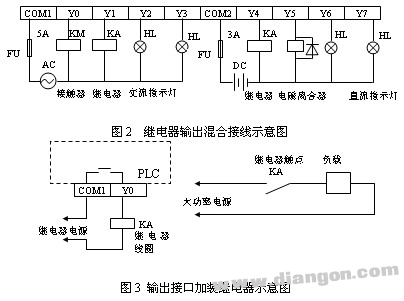PLC devices come with three types of output options: relay output, transistor output, and thyristor (SCR) output. When working on a PLC, it's essential to understand the power requirements of the connected load. According to the main technical specifications, thyristor outputs are only compatible with AC loads, while transistor outputs are designed for DC loads. Relay outputs, on the other hand, can support both AC and DC loads. If the load's rated current or power exceeds the interface specifications, it's necessary to use a contactor or an intermediate relay to connect it to a high-power supply.

Relay output PLCs can handle both DC and AC power supplies. It is possible to connect devices that operate on the same type and voltage to the same COM terminal. However, during repairs, it's crucial not to connect different power sources to the same COM terminal. If the power sources are identical, the COM terminals can be safely connected together.

The response time of the system is 0.2 ms. At a condition of 24V and 200 mA, the actual time refers to when the circuit cuts off the load current completely. To enhance the response time, a parallel current-saving diode can be used. If a response time of less than 0.5 ms is required, the power supply should be set at 24V with 60 mA.
Figure 2 illustrates the wiring diagram for hybrid control of AC and DC equipment using a relay output. Figure 3 shows a schematic of the transition through a relay when a transistor output controls an AC device or a high-power device in the control zone.

Understanding the differences between these output types is key to ensuring safe and efficient operation. Always refer to the manufacturer’s guidelines when connecting external components to avoid damage or malfunction. Proper configuration and maintenance of the PLC output modules will help extend the life of the system and improve overall performance.
Steel Tubular Pole,Galvanized Tubular Steel,Steel Tubular Pole Tower
JIANGSU XINJINLEI STEEL INDUSTRY CO.,LTD , https://www.chinasteelpole.com